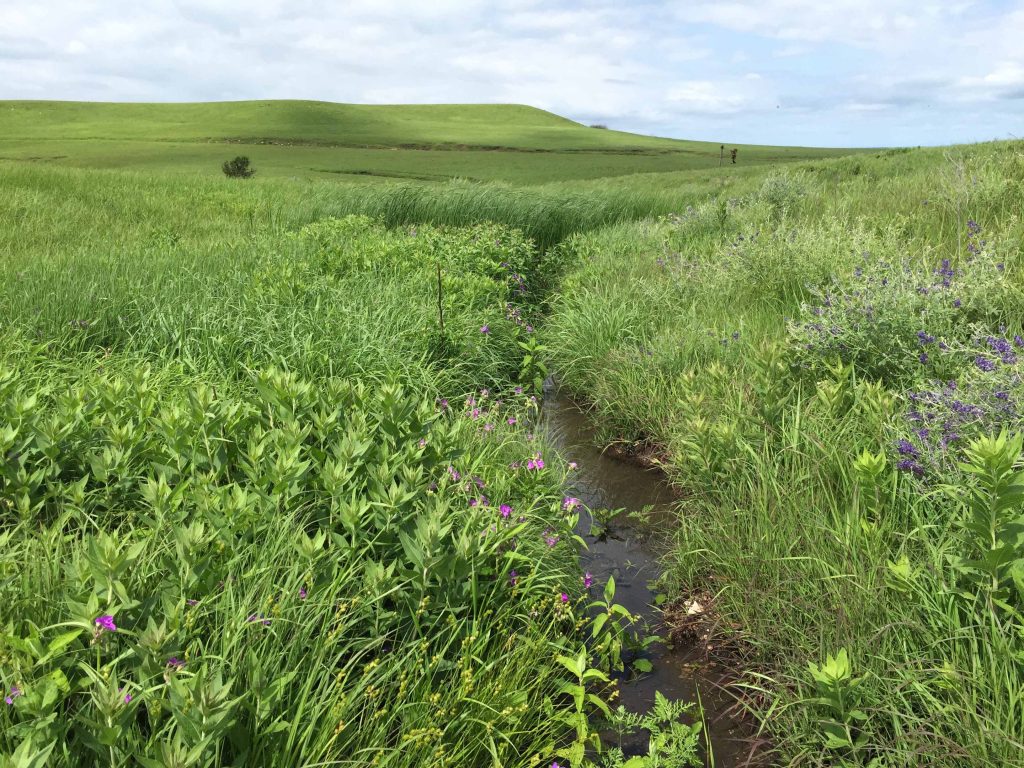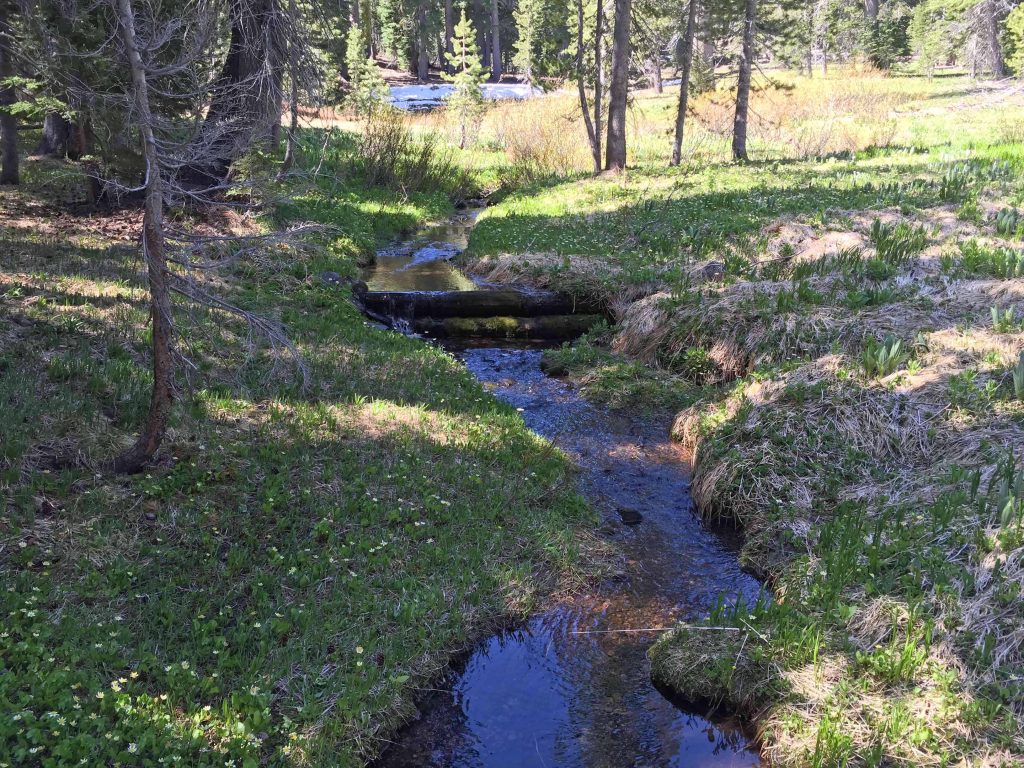UNC-Chapel Hill study finds common width among headwater streams
March 13, 2018
Kings Creek in Konza Prairie Biological Station, Kansas
A recent study published in Nature Communications shows that small stream networks, also known as headwater streams, are remarkably similar despite a wide range of climates and geologies. The research team, led by Tamlin Pavelsky, associate professor in the UNC-Chapel Hill Department of Geological Sciences and affiliate faculty member of the UNC Institute for the Environment and his former graduate student George Allen (now a postdoctoral researcher at NASA’s Jet Propulsion Lab at the California Institute of Technology), collected the most comprehensive set of field measurements to date of stream width and length in the smallest streams. A model validated using this data will enable researchers to better estimate the total surface areas of rivers and streams across the planet, an important metric for estimating the amount of greenhouse gases rivers and streams emit into the atmosphere.
“In essence, there is a single most common width for streams—about 32 centimeters—everywhere from the permafrost of Alaska to the prairies of Kansas and the mountains of New Zealand,” Pavelsky said. “The most important implication is that we can use this similarity to better estimate the total surface area of rivers and streams in the world, which controls the movement of carbon dioxide from streams into the atmosphere.”
According to the study, small streams are a significant source of greenhouse gas emissions into the atmosphere. More than half of the greenhouse gas emitted from river and stream networks originates from small headwater streams. Headwater streams also comprise an estimated 89% of the global stream and river network length and are the source of water, sediment, nutrients and organic matter for downstream systems. These streams contribute to significant biodiversity within watersheds, including the stream’s metabolism, nutrient cycling and contaminant uptake and export.
“The results hold significant implications for understanding hydrological, ecological and biogeochemical processes occurring in headwater streams,” Pavelsky said. “For example, previous studies of greenhouse gas emissions from rivers and streams estimated stream surface area using Pareto scaling laws on static USGS and international DEM-derived flowlines, which significantly underestimated the abundance of headwater streams.”

Having this model and data set will have a significant impact on the understanding of the hydraulic, ecological and biogeochemical functions of stream networks. The research team is now working to integrate these measurements of the world’s smallest streams with satellite measurements of big rivers to understand how the surface area of rivers and streams is distributed around the globe.

